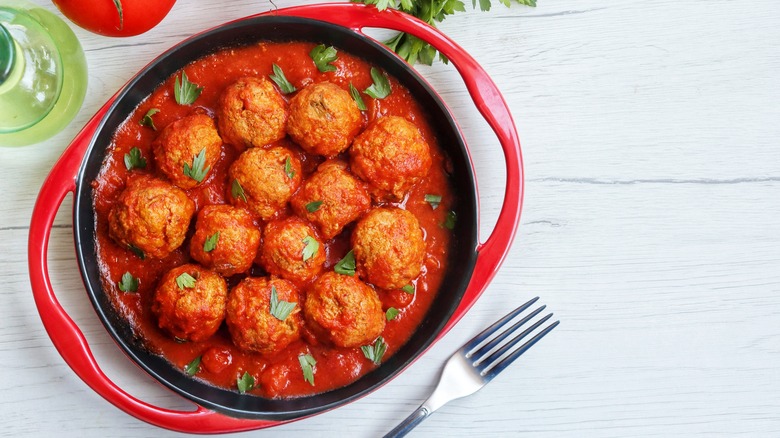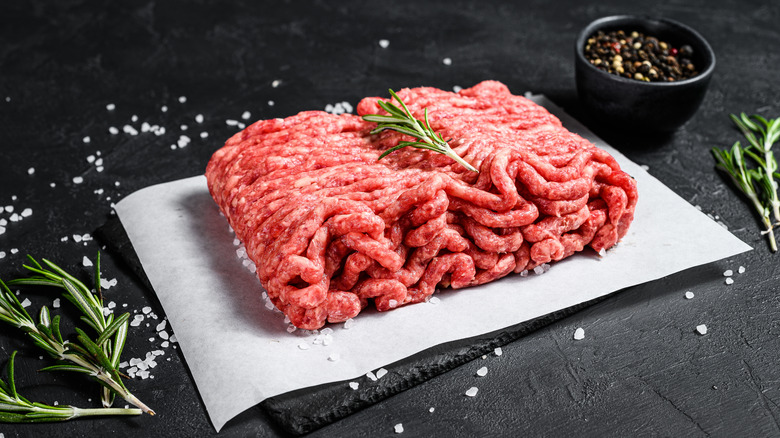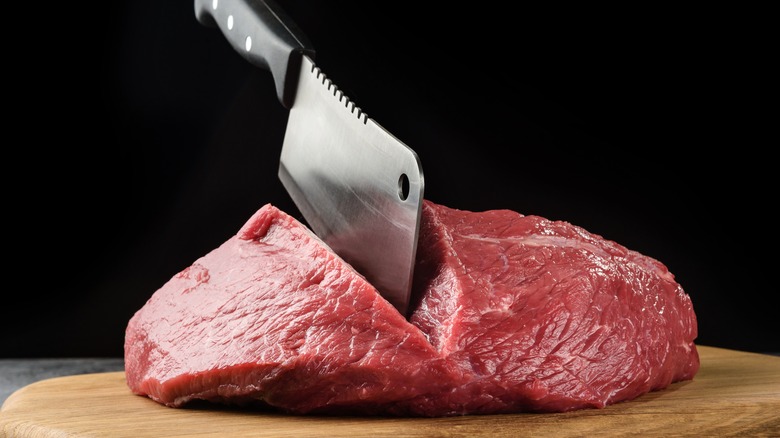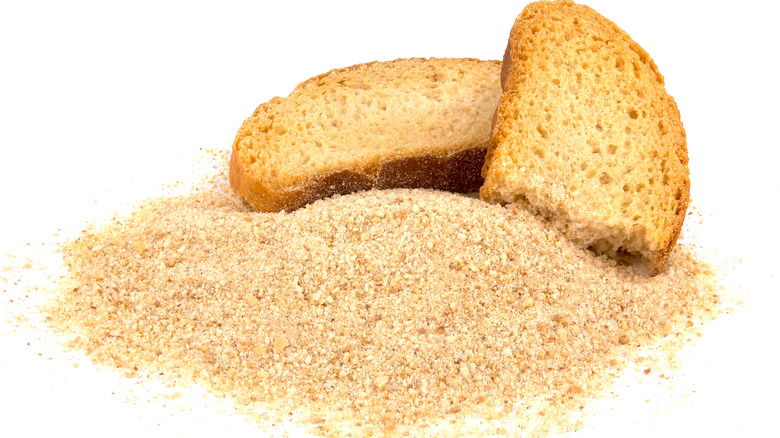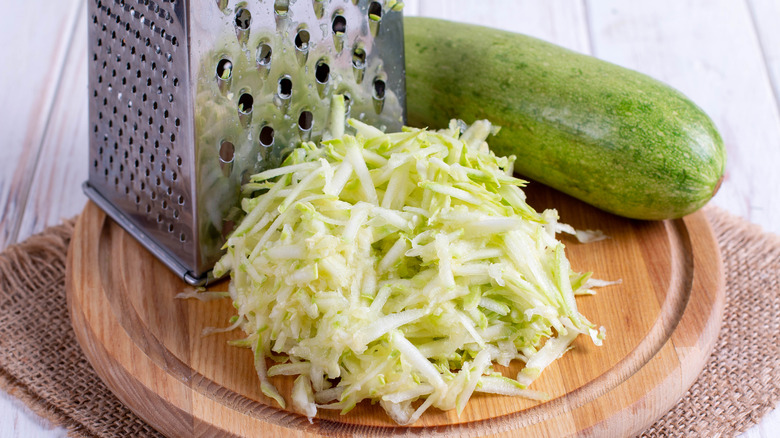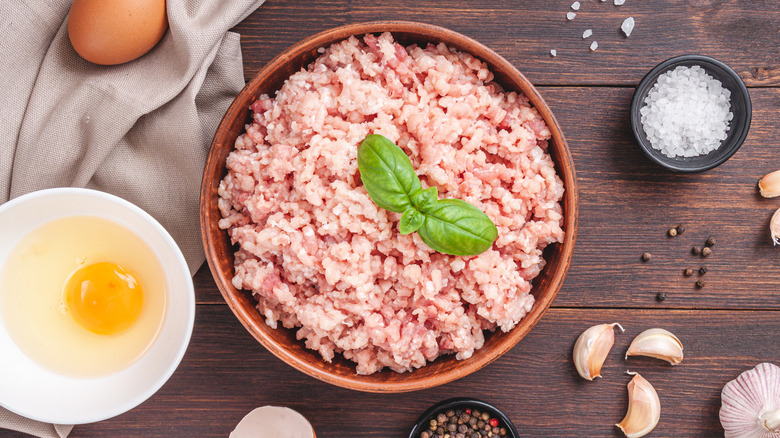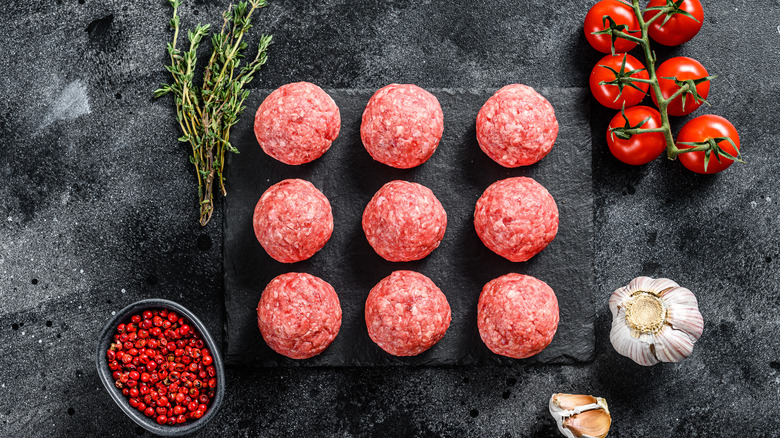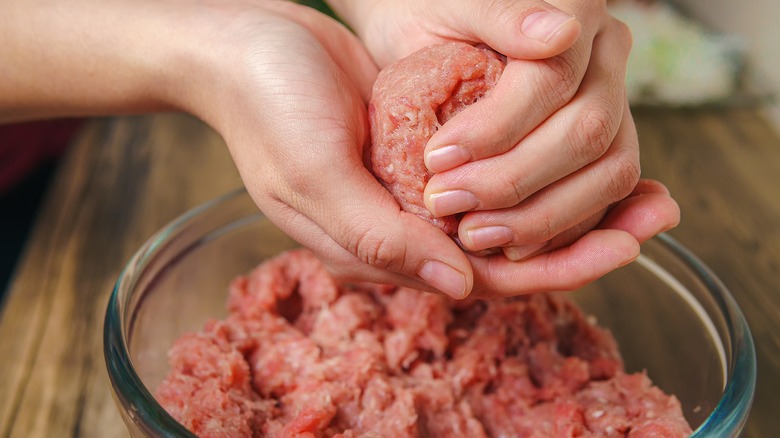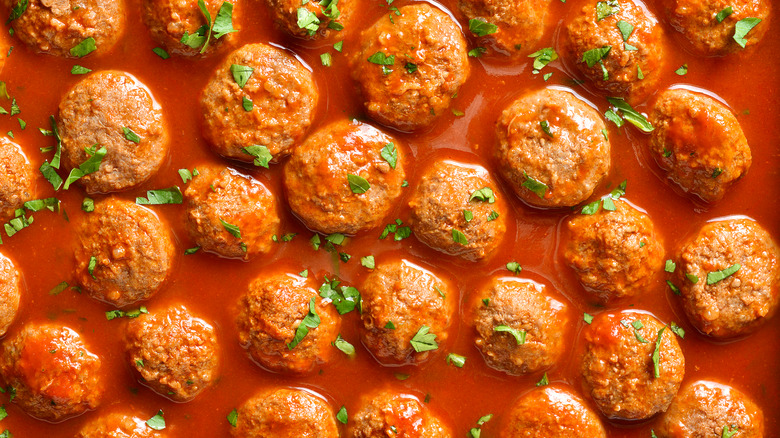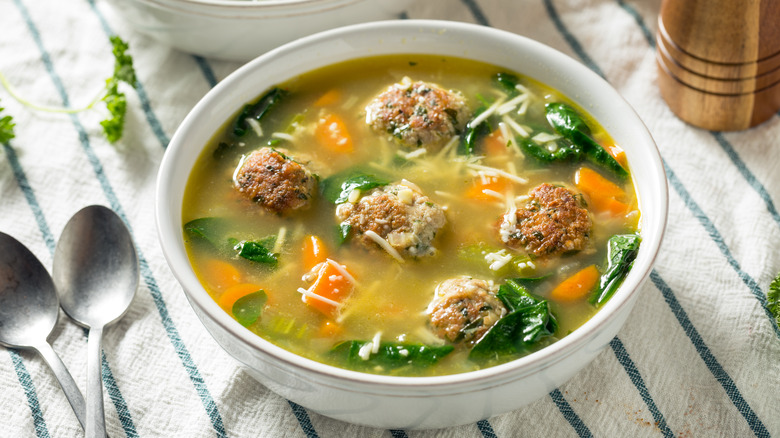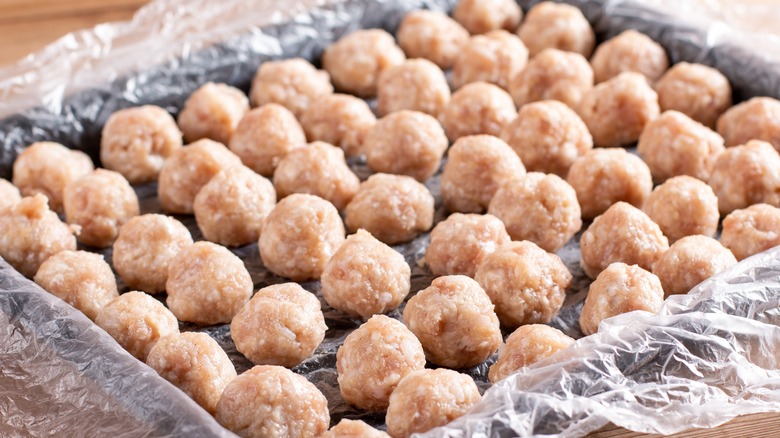13 Mistakes You Might Be Making With Meatballs
Meatballs are a popular dish made and served in diverse ways all across the globe. In Mexico, they are called albondigas and are filled with ground meat, white rice, and spices and served in a brothy soup. In the Middle East, meatballs called kofta are made with lamb and beef and served with warm pita bread and creamy hummus. Koftkas are sometimes cooked on skewers as kebabs. In the Netherlands, meatballs are called bitterballen and deep fried for a crunchy meatball snack. And in Italy, they are called polpette and are surprisingly served alone on a plate without a single strand of spaghetti in sight.
In the U.S., meatballs are used in many Italian-American dishes like the classic spaghetti and meatballs. You can also find them squished between two slices of thick white bread on submarine sandwiches, layered on pizzas, and on toothpicks at cocktail parties.
These tasty little balls of goodness are so versatile everyone should know how to make them. They seem like a simple dish to make, but a few things can go wrong when making meatballs, from being too dry, too wet, or too bland. Learn if these small mistakes you might be making with meatballs are keeping your meatballs from being the best they can be.
1. Not using enough seasonings
A common mistake many make with meatballs is forgetting to season them or not seasoning them enough. The best time to add seasonings is when you are mixing the ground meat together as the flavors will evenly spread throughout the mixture before you start forming it into balls.
The seasonings you choose depend entirely on how you plan on using the meatballs. If you are going for Italian flavors for pasta or pizza, then stick with classic Italian seasonings like oregano, parsley, basil, garlic, and onion. But if you are looking for something new, consider adding in a touch of cloves or freshly ground nutmeg for more aroma.
A packet of onion soup mix is another fun way to add more flavor. For even more depth, include roasted garlic or garlic confit, which is garlic that has been slow-roasted in oil and then preserved. You can mince some of the cloves or just drizzle some of the oil into your meatball mash. For those seeking some heat, add red pepper flakes or a few dashes of your favorite hot sauce to amp up the heat and flavor of your meatballs.
2. Using meat that is too lean
While there is no one right way to make a meatball, there are a few things you can do to ensure they are flavorful. The first step is to make sure they have enough fat. Adding fat to your ground meat helps hold it together and intensifies the taste and mouthfeel of the final product. The classic meatball recipe uses one-part pork to one-part beef ratio, which makes a good combination since pork is higher in fat and beef is leaner.
But what if you are using other meats? Well, Chef Daniel Holzman, co-owner of The Meatball Shop in New York City, explained to First We Feast that the ratio of lean meat to fat should be close to 70% meat to 30% fat. He suggests keeping this ratio in mind when mixing different types of meats to find that perfect fat-to-lean ratio for the best meatballs, especially if you are using leaner meats.
3. Not trying different meats
Traditionally, meatballs were made with leftover bits and pieces of less desirable cuts of meat. Making meatballs was a great way for a little bit of meat go a long way, which is probably why you can find them in many cuisines throughout the world. Many home chefs stick to a combination of pork and beef, sometimes with some veal thrown in, but that isn't the only way to make meatballs. And you are really doing yourself a disservice if you aren't expanding your repertoire and including other meats.
Take a page from Middle Eastern cuisine and try making meatballs with ground lamb and spices. Or give game meat a go and opt for bison or elk meatballs for a unique twist on the classic. Ground white meat, like chicken and turkey, are also good alternatives.
Home chefs who are serious about making meatballs should consider investing in a meat grinder to control the mix of meat and fat ratios. For those new to making them, the local butcher can often grind up different combinations of meats to buy. You never know which one might end up being your favorite.
4. Not using the right binder
Meatballs are basically ground meat, spices, and a binder. The binder is a key component because that's what keeps the whole shebang together; it's the glue that makes everything stick. Eggs are the most commonly used binder, because they are protein-rich, and when that protein cooks, it holds everything together. But the trick is to use the right amount of eggs; too many will make the mixture too sticky and give the meatballs a soft texture. But not using enough will keep the mixture too dry to form into balls that hold their shape. One egg per pound of meat is the general rule of thumb.
An alternative to using eggs as a binder is to use ricotta cheese. Ricotta is soft enough to bind and hold the meatballs together and won't alter the flavor too much. Some chefs even use Greek yogurt as a binder to keep the meat mixture moist and give it the tanginess. Soft tofu would also work as a binder for meatballs. While it will add texture, it doesn't provide any extra flavor and will blend into the other flavors.
5. Mixing in too much filler
Regular breadcrumbs are a classic filler used in meatballs — but it's not the only one you can use. If you find yourself out of them or just want to try something new, reach for panko, which are Japanese breadcrumbs. This alternative crumb offers a lightness to the traditional meatball. It differs from regular breadcrumbs because it is cooked, then made into flakes and dried, giving it a flaky and light texture that isn't as heavy.
Oatmeal is another binder that works to keep meatballs together and is a great alternative to breadcrumbs for gluten-free diners. Ideally, you should pulse it in a blender to break up the oats and create a finer oatmeal; just avoid pulverizing it into powder. Crackers work as a binder, as well, with saltines and Ritz crackers adding their own flavors. All you need to do is crush them in your hands and add them to the mix.
If you follow a keto or a low-carb diet, you don't have to miss out on meatballs; you can use ground pork rinds as a breadcrumb alternative. Just know that pork rinds will add some saltiness to your meatball mix, so you won't need to add too much additional salt.
6. Forgetting to mix in veggies
Meatballs are a great hiding place to stash vegetables. Many Americans don't eat enough of them, so finding ways to add more nutritious and vitamin-rich vegetables to your foods is on many home chefs' minds. The simple addition of grated vegetables in your meatball will help turn them into a healthier dish, and contribute to the texture and flavor profile.
Grated raw zucchini gives meatballs a dose of moisture, raw grated carrots add a nice texture, and grated beets give some color. Of course, avoid going overboard so you don't have more vegetables than meat. A grated vegetable is a good addition to keep your meatballs full of flavor and leaning on the healthy side.
If you love the addition of vegetables and prefer to skip the meat altogether, you can make pure vegetable meatballs. For instance, lentils make a great base if you are making meatless meatballs. They also combine well with various vegetables to create a tasty bite that's delicious plain or with a sauce.
7. Overmixing the meat
Combining the meat mixture evenly is key to making a good meatball, but be careful not to overmix it. Overmixing will turn your mixture into a paste and leave you with meatballs with a less-than-desirable texture. To avoid overmixing, don't use a food processor or blender to mix your meatballs. Using a food processor might seem like a good shortcut, but it will quickly overwork the meat. Overworked meat is one of the biggest meatball mistakes because they will turn out dense and hard. Instead, wash your hands, pull up your sleeves, and get in there to mix with your bare hands.
If you are put off by the idea of touching raw meat, you can use disposable kitchen gloves, which will still give you control without having to get raw meat under your fingernails. Or you can use two wooden spoons to mix everything together.
8. Making them too big or too small
When it comes to meatballs, size does matter. And perfectly-sized meatballs really depend on how you plan on using them. Mini meatballs are great for appetizers like Crock-Pot party meatballs. Medium-sized meatballs are best in pasta and soups, while large meatballs are best used in sandwiches. If you are making meatballs for pizza, there are two ways you can go: Use smaller ones and dot your pizza with the little balls of meat, or slice larger meatballs and top your pizza with them.
If you are making mini meatballs, a melon baller can help you consistently get the same size that is ideal for appetizers. For medium and larger meatballs, you can use a digital kitchen scale to ensure they are the same amount of mixture. Medium-sized meatballs typically weigh about 1 ounce, while larger meatballs can range from 2 to 3 ounces. From there, you'll want to use your hands to shape them.
One way to make the mixture easier to handle altogether is to chill it in the refrigerator for an hour before you start shaping the meatballs. This will help the fats to solidify and the ingredients to meld together, making it is easier to handle and form into uniform sizes.
9. Forming them with dry hands
A common mistake that many make when making meatballs at home is using dry hands to mix and form the balls. Dry hands are a recipe for disaster because the gooey mixture sticks to them and makes it harder to maneuver and manipulate it into the right shape. Keep a bowl of water on the counter and dip your hands in every now and then while you are working to keep them wet and the mixture from sticking. Alternatively, you can use olive oil instead of water.
However you choose to keep your hands wet, keep in mind the meat mixture is raw, so if you touch anything — like kitchen towels, countertops, or the faucet — you are contaminating everything with raw meat. Try not to touch anything other than your meat mixture and wash everything thoroughly when done.
The benefit of using your hands is you can feel if the texture is off, meaning the meat mixture feels like it is falling apart. If that happens, you may need to add either more binder or more filler. Falling apart while forming is either because they are too wet or too dry, so keep all of your ingredients handy in case you need to make adjustments.
10. Not knowing when to brown and when to drop
There are several schools of thought when it comes to the best way to cook meatballs, and the truth is they all work. One method is to pan-fry them in oil on the stovetop to brown them. This method will create the Maillard Reaction, which gives the meatballs a distinct outer layer and a crisp bite. You can also bake them in the oven to get that brown exterior and deeper flavor. Another way is to use the 'drop method' for making meatballs, which involves simply dropping them into a sauce and allowing them to fully cook while soaking in the flavors. The fat that is rendered from the meat will go directly into the sauce, giving you a tastier final product. The method you choose just depends on what you are making and how you want the final dish to turn out.
Browning them first is great for meatballs that are paired with dipping sauces or as a stand-alone dish where the texture is part of the experience. The outer layer locks in flavor and helps them keep their shape. But if you are making meatballs that will be served smothered in sauce, like glazed mini meatball appetizers or Swedish meatballs that are served in a thick gravy, then dropping them and cooking them directly in the sauce is a better option.
11. Over-simmering them in the sauce
A common belief is that the longer you simmer a sauce, the better the flavor will be, but if you have added meatballs to your sauce, then you need to rethink this idea. Over-simmering the meatballs can make them tough in the center and oddly soggy on the outside from absorbing too much liquid. If you browned them first, then cook them on a low simmer for around 10 minutes or until the internal temperature is 165 degrees Fahrenheit.
If you have dropped your meatballs directly into the sauce without pre-browning, then you will want to simmer them longer to ensure they are cooked; anywhere from 45 minutes to one hour should be enough time for them to cook without breaking apart or becoming too tough. Whether you are pre-browning or not, always check the internal temperature to avoid food poisoning.
12. Not adding them to soups
A common meatball mistake home cooks make is not diversifying their meatball experience. Meatballs on pasta and sandwiches are a common way that diners them, but they are also great in soups and stews. Italian Wedding Soup is a popular option that combines vegetables, broth, and meatballs.
In Mexico, meatballs are added to a tomato-based broth with vegetables for filling comfort food. The meatballs for Albondiga Soup have uncooked rice mixed into the raw meat mixture, and as they simmer in the soup, the rice cooks and puffs up the meatballs, giving them a unique texture that is both firm and soft at the same time. The key is to stick with long-grain rice and avoid adding other varieties, like brown or wild rice, which have a longer cooking time.
These aren't the only ways to add meatballs to soup; you can add them to a hearty lasagna soup or a miso-based broth for some umami, or add them to a creamy Swedish-style meatball soup. The possibilities are endless.
13. Not making enough to freeze
If you are making meatballs, then why not go all out and make a large batch? They are versatile, freeze well, and making them excellent candidates for meal prepping. Make a couple of different sizes, so you have them ready for quick weeknight meals or appetizers.
Technically, you can freeze them before or after cooking, but do your future hungry self a favor and freeze them after cooking. That way, you can just pull them out and reheat them instead of having to cook them fully. Whether pre-cooked or not, once frozen, the meatballs will be good in the freezer for two or three months, according to the FDA.
When prepping for freezing, don't make the mistake of putting all of the meatballs in a bag and throwing them in the freezer because they will stick together, and you will have one giant meatball. Instead, spread them out on a baking sheet so they can freeze individually, then throw them in a freezer-safe bag for future use.
